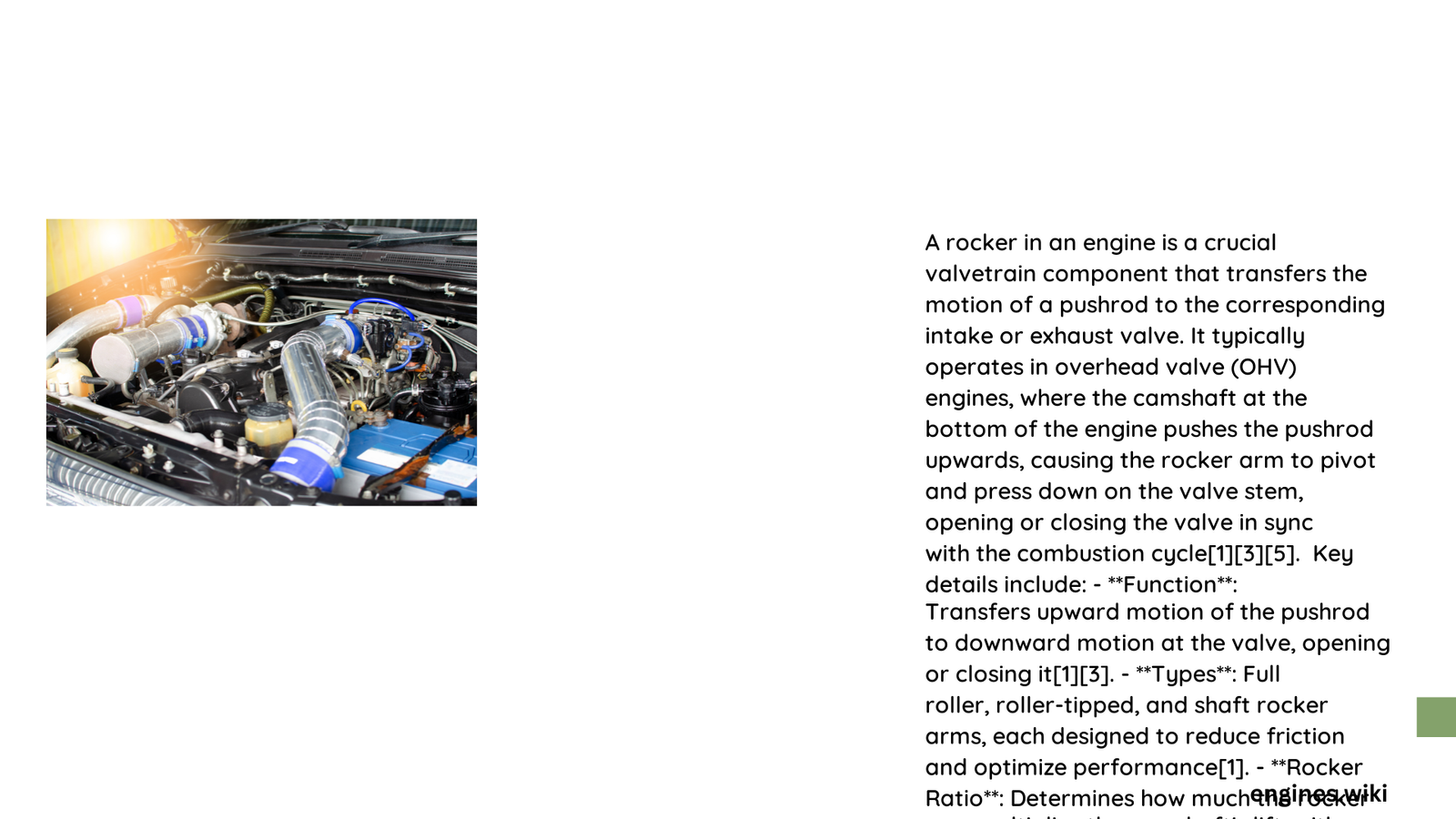A rocker arm is a pivotal mechanical lever within an internal combustion engine’s valve train system that transforms the rotational motion of the camshaft into precise linear motion for opening and closing engine valves. This ingenious component acts as a critical intermediary, translating camshaft lobe movement into controlled valve lift, ultimately determining an engine’s breathing efficiency, performance, and overall operational characteristics.
What Exactly is a Rocker Arm?
Rocker arms represent sophisticated mechanical interfaces between camshafts and valves, serving as precision translation mechanisms in modern internal combustion engines. Their fundamental purpose revolves around converting rotational camshaft motion into precise linear valve movement.
How Do Rocker Arms Function?
Rocker arms operate through a sophisticated mechanical leverage principle:
- Motion Conversion: Transforms camshaft rotational energy into linear valve motion
- Mechanical Advantage: Amplifies valve lift through strategic geometric design
- Precision Control: Ensures accurate valve timing and lift characteristics
What Are the Primary Components of a Rocker Arm?
| Component | Function | Material Considerations |
|---|---|---|
| Fulcrum | Pivot point for lever motion | High-strength steel |
| Rocker Arm Body | Primary structural element | Aluminum or steel alloys |
| Adjustment Screw | Valve lash regulation | Heat-treated tool steel |
| Roller/Pad | Direct valve stem contact | Hardened steel or roller bearings |
What Types of Rocker Arms Exist?
- Shaft-Mounted Rocker Arms
- Superior stability
- Reduced flex characteristics
-
Preferred in high-performance applications
-
Stud-Mounted Rocker Arms
- Simpler design
- Common in older engine configurations
-
Less structural rigidity compared to shaft-mounted variants
-
Roller Rocker Arms
- Integrated roller bearings
- Reduced friction
- Enhanced durability
- Improved performance potential
What Determines Rocker Arm Performance?
Performance depends on several critical parameters:
- Rocker Arm Ratio: Determines valve lift multiplication
- Material Composition: Influences durability and weight
- Geometric Design: Affects mechanical efficiency
- Manufacturing Precision: Impacts overall valve train performance
What Challenges Do Rocker Arms Face?
Rocker arms encounter multiple operational challenges:
- Thermal Stress: Extreme temperature variations
- Mechanical Wear: Constant motion and friction
- Precision Requirements: Minimal tolerance for dimensional variations
- Load Fluctuations: Rapid acceleration and deceleration cycles
What Maintenance Considerations Exist?
Proper rocker arm maintenance involves:
- Regular valve lash adjustments
- Inspection for wear and deformation
- Lubrication of pivot points
- Monitoring for unusual noise or performance degradation
What Future Developments Are Anticipated?
Emerging trends in rocker arm technology include:
- Advanced composite materials
- Integrated sensor technologies
- Improved computational design methodologies
- Lightweight, high-strength configurations
Conclusion

Rocker arms represent a critical yet often overlooked component in engine design, bridging the complex interaction between camshaft motion and valve operation with remarkable precision and efficiency.
Technical Specifications Summary
- Primary Function: Camshaft motion to valve lift translation
- Typical Ratio Range: 1.45:1 to 1.7:1
- Common Materials: Steel, aluminum alloys
- Critical Performance Metrics: Valve lift, timing precision, mechanical efficiency
Reference:
– Manton Racing Products
– SAE Technical Papers
– Engine Engineering Journal
